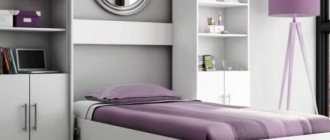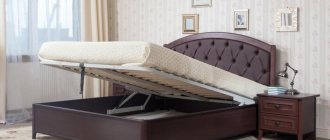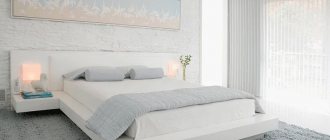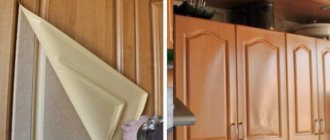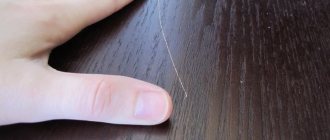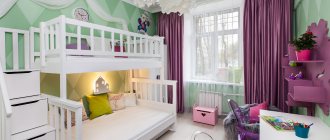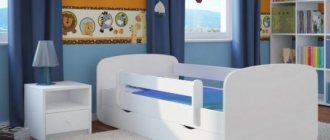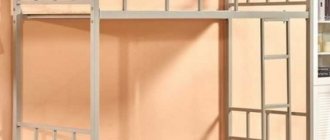Adequate sleep is the key to excellent well-being. The supply of physical, emotional and creative strength of each of us depends on the quality of sleep. To get a good night's sleep, you need to choose a suitable mattress with an orthopedic effect. And the “correct” basis for it will be a special orthopedic bed frame.
What is an orthopedic grille
The most important element of any type of bed is the base, which serves as a support for the mattress. Solid models made from solid boards or chipboard, beds with armored mesh are gradually becoming a thing of the past. To replace them, manufacturers offer orthopedic bases - frames with or without legs, on which lamellas curved outward are attached. Sometimes you can find lamella-free models consisting of special blocks.
A type of orthopedic base without legs is called an orthopedic lattice. Unlike models with legs, which are placed on the floor and can be used as an independent element, the grille is placed on the bed sides provided for this purpose.
The versatility of an orthopedic sofa bed
Among the wide range of folding sofas, the orthopedic sofa bed occupies a special place.
It is used as a guest sofa for relaxing and as a full bed.
To prevent such a load from affecting the quality of the product, you should be careful about the selection factors:
The presence of a mechanism with wooden slats . They are made in the form of bent plywood strips and are located across the bed. Their convexity towards the mattress creates a springing effect, supporting the body under the neck and lower back and bending under the shoulders and pelvis.
Mandatory presence of an orthopedic mattress . You cannot be content with “composite” sleeping places. When disassembled, the sofa bed has different levels of hardness, which is unacceptable for healthy sleep.
Read also: Loft bed with work area
The presence of a linen drawer indicates the quality of the sofa bed . It must be made of plywood (solid wood), but not of chipboard or hardboard.
It is better to choose domestic factories as a manufacturer . Foreign products are not designed for active use. Their models are of a guest nature. You should choose sofa beds for daily use (adapted specifically for domestic consumers).
Want to protect your expensive double mattress? A mattress cover with an elastic band 160x200 will protect against moisture and dirt.
In order to diversify your upholstered furniture, just lay decorative pillows on it. Read on this page what kinds of crocheted pillows for sofas there are.
And if you are choosing a pillow for sleeping, first of all you should pay attention to the filling. Find out here how to choose a pillow for sleeping, what are the differences between different types of fillers.
Varieties
Main types of orthopedic sofa beds:
Eurobook . This is the most popular model. It is distinguished by its aesthetic appearance and practicality. After unfolding, two flat, ideal beds are formed. The Eurobook is equipped with a convenient niche for linen.
An accordion bed with an orthopedic mattress is comfortable for daily use . This original name comes from a folding mechanism similar to an “accordion”.
From three compartments of the frame, the sofa folds and unfolds lengthwise if you lightly pull the lower part.
A thick and durable orthopedic mattress is usually placed on such a sofa.
A corner sofa bed with a modern dolphin mechanism . Its principle of operation: with a gentle jerk up and immediately forward, the seat moves forward, adjacent to the corner area.
This is how a sleeping place is formed. The service life of such a model is determined by the hardness of the wood and the quality of its processing.
Design of an orthopedic bed frame
The frames of orthopedic bases for mattresses differ in design and materials used. Traditionally, metal, wood, or a combination of both are used to make the frame of such a grille. The base, made of metal, is usually an all-welded structure. For larger beds, the mattress support usually consists of two parts bolted together. Wooden frames are most often made from collapsible modules.
A distinctive design feature of most orthopedic bases is the use of special strips - lamellas. It is they who will play the role of an anatomical lattice that holds the mattress and ensures the necessary rigidity of all its zones.
Purpose and principle of operation
The task of the orthopedic lattice is to distribute the load created by the body of a resting person, and at the same time maintain the anatomy of the spine in a natural position. The mattress, under the influence of gravity, transfers the load to the convex elastic lamella, which, in turn, bending, compensates for the pressure of the compressed mattress filler at a specific point.
When producing such parts, a responsible manufacturer takes into account the anatomical characteristics of a person and divides the base structure into zones of different rigidity. Comfort from using orthopedic models is achieved due to almost no sagging sections of the lattice in the lumbar region of the future consumer and a softer zone at the level of the shoulder girdle and legs.
USEFUL INFORMATION: Smart mattresses: Smart Mattress Eight, Luna, Hilding IQ X-Pro, Dunlopillo RESPARK
Varieties by type of material
Depending on what raw materials were used in the manufacture of the frame, base frames are distinguished by the type of material. Today, manufacturers present models that include:
- Metal frame. As a rule, this is a one-piece structure made of steel metal profiles. Such products are reliable and durable, but in the non-dismountable version they can be difficult to bring into the apartment. Collapsible structures are more convenient to transport, but have lower rigidity.
- Wooden frame. Usually consists of separate elements. Some models of wooden structures can withstand a load of up to 240 kilograms per bed.
Criterias of choice
When purchasing furniture, it is important to take into account not only the height of the users, but also the size of the room. The age of the people who will sleep on it is also of great importance. As for the length of the furniture, it should exceed the user’s height by 15–20 cm.
Popular models of bunk beds for dolls, requirements for them
It is important to consider the following factors:
- The density of the lamellas in the base is selected depending on the expected load. You need to take into account not only your own weight, but also the weight of bedding, including the mattress, as well as children who like to run into their parents’ bed in the morning.
- Soft mattresses are suitable for daily use by older people who like to sleep on their sides. Products of medium hardness are recommended for people of average height and weight who lead an active lifestyle. Hard mattresses are suitable for children and adolescents whose musculoskeletal system is not yet fully developed, users with back pain and those who are overweight.
- The base area at the head can be soft or hard depending on consumer preferences.
- A fragile, cheap frame will quickly damage the entire structure. The best option in terms of cost and quality is a metal base. For fixed beds for home use, a steel item is recommended; for folding beds, an aluminum item is recommended.
- If the mattress is selected separately, it is important that it fits the base in size, does not bulge, or slide during use.
The presence of a niche for things under the base, with all its convenience, eliminates one of the important advantages of a bed with an orthopedic mattress - good ventilation. In this case, the base must be systematically raised so that all internal compartments are ventilated.
Choosing a good orthopedic bed, which will provide comfortable conditions for rest and sleep for many years, while simultaneously providing unobtrusive prevention of diseases of the musculoskeletal system, is quite a troublesome matter. You need to take into account many nuances, comparing your desires with material capabilities. It should also be remembered that purchasing an orthopedic bed is not only a renovation of the interior, but also an investment in preserving the health of yourself and your loved ones.
Slat density
Mattress hardness
Frame strength
Availability of storage space
Types of bases by type of lamellas and lath holders
The configuration of the lamellas can be straight or convex, and their width varies from 3 to 9 cm. When choosing a suitable base, you need to focus on the purchased mattress, which can consist of independent spring blocks, dependent Bonnel spring blocks, a monolithic or multilayer slab (“ springless").
Wide slats
The width of such slats is 6–9 cm, less often up to 12 cm. They can be mortise or overhead.
The distance between the slats is 5–7 cm. Plus - affordable cost.
The downside is the gradual deformation of the mattress covering layers at the points of contact between the lamellas and the frame.
Wide slats are suitable for:
- springless mattresses;
- products with a dependent spring block;
- spring models with a low spring density (210–300 pieces per sq. m.) and a layer of hard filler like coconut coir.
Narrow slats
Slats of this type are 3–5 cm wide with a distance between them of 3–4 cm.
Plus, elastic narrow slats allow the base to be more flexible and provide optimal adaptation to loads.
The downside is that such lattice structures belong to the more expensive segment of orthopedic bases.
Narrow slats are used to support all types of mattresses, including:
- products with high spring density;
- soft “springless”;
- mattresses for orthopedic cribs.
Types of lath holders
Holders for slats are divided into 3 types (see photo):
- Mortise. Usually made of plastic, the slats are fixed directly into the body of the metal frame. Can only be used with wide slats. The disadvantages of mortise models include the rapid appearance of squeaking.
- Plastic overhead. They are located on top of the frame in grooves. The most common option.
- Rubber patches. They are fixed in the same way as plastic ones, and are equipped with an additional platform that reduces the load on the slats and extends their service life. Rubber allows you to withstand more weight and almost completely eliminates squeaking.
Mortise Lat Holders
Plastic overhead holders
Rubber holders USEFUL INFORMATION: Children's mattress with coconut filling
What types of bases are there?
When planning to purchase a base for a mattress, it is worth learning more about what types of bed bases there are. For modern models the following classification applies:
- Standard. The bases are on a metal frame with slats, the distance between which does not exceed 8 cm. As a rule, such models have their own support in the form of legs, and the lattice design ensures full use of the mattress.
- Multilamella bases. Models with a distance between slats of no more than 4 cm and the ability to adjust the rigidity of the bed using special elements. They provide a pronounced orthopedic effect and allow you to create optimal conditions for sleeping on a double bed. Suitable for tall and heavy mattresses.
- Solid bases. Frames with MDF inserts do not have elasticity. However, it is thanks to them that you can appreciate the benefits of mattresses with fillers that provide a memory effect. Also suitable for people with heavy weight.
- Transformable. Allows you to adjust the bend of the bed and the tilt of the headboard individually using a special remote control. Such bases are classified as expensive, but they allow you to create the most comfortable sleeping conditions.
Also, bed bases can be equipped with lifting mechanisms to provide space for storing bedding.
Grilles with additional functions
Orthopedic bases with additional properties allow you to make the bed as comfortable as possible.
- Built-in lifting mechanisms - electrically driven devices and mechanical devices - provide easy lifting of the mattress support and allow you to hold them at the desired point.
The use of gas shock absorbers built into some models of orthopedic beds makes it possible to raise the base along with the mattress, providing access to drawers for bedding.
- Transformable bases, equipped with an electric drive and a control panel, allow you to fix the orthopedic base in the “lying”, “reclining” or “sitting” position. Such technologies provide an increased level of comfort in any life situations. Springless products are usually chosen as a mattress for such models.
- Models with a stiffness regulator allow you to independently set the degree of elasticity of the lamellas. They are usually installed in areas of high stress - in the lumbar region of the sleeper. The double lamellas are equipped with special plastic sliders that serve as a stiffness regulator. Such bases are suitable for people of non-standard build and are adapted to individual needs.
Signs of an orthopedic bed
"Orthopedic" means "straight". Comfortable beds of excellent quality allow the spine to take a strictly horizontal position. Without constriction of blood vessels and displacement of the vertebrae, the night restoration of the body occurs completely.
An orthopedic bed is considered to have:
- frame frame supporting a lattice of slats (lamellas, battens, latoflexes);
- slats made of durable bendable wood;
- a mattress that can adapt to the body;
- materials that are not harmful to health.
Each sign must be looked at before choosing an orthopedic bed.
A comfortable bed should be in any home. Proper spinal support for children, the elderly, and people with spinal difficulties is very important.
How to choose a suitable orthopedic grille
In order for the orthopedic bed frame to perform its functions 100%, when choosing a model you must adhere to simple rules:
- Any base is selected for a specific type of mattress. There is no point in using a cheap mattress in combination with an expensive lattice, because the base only extends its service life and provides an enhanced orthopedic effect.
- For mattresses made on the basis of a block of independent springs, a base with a small pitch of lamellas would be optimal. Otherwise, the pressure of the springs trapped in the inter-rack space will lead to damage to the filler. Therefore, for such models, bases with a frequent arrangement of slats are suitable, which is considered ideal for any mattresses.
- The profile height of the standard base is 3 cm. Grilles equipped with additional functions may be slightly higher. Therefore, it is important to consider how the trellis will fit into the bed frame and how much the mattress will protrude from the side walls.
- It is necessary to pay attention to the technical characteristics of the frame, the method of fastening and the number of lamellas. There must be at least 12 wide or 22 narrow bars in a row.
- You need to measure your sleeping area very accurately. The grille must be positioned firmly and securely in the bed frame. The dimensions of the mattress and the base must clearly match, otherwise the bedding will move out. Common sizes of bars and corresponding mattresses are: 90 × 200, 100 × 200, 140 × 200, 150 × 200, 160 × 200, 180 × 200 or 200 × 200 cm.
USEFUL INFORMATION: Foam mattresses: varieties, features, choice
Why do you need an anatomical bed base?
Previously, armored mesh was used as a base for mattresses, later - solid sheets of plywood or boards of small thickness laid without gaps. Today, mesh bases are no longer produced, and the latter turned out to be not very compatible with modern orthopedic mattresses. Over time, manufacturers developed a new element: an anatomical bed frame over almost three decades of operation has confirmed a number of advantages:
- Optimal support, enhancing the orthopedic properties of mattresses. The anatomical lattice frame elements allow you to evenly distribute the load over the sleeping area, ensure the correct operation of the spring blocks and help achieve the most comfortable sleep.
- Long and stable operation. The slatted anatomical base can withstand significant weight and dynamic loads, and therefore its service life is at least 10 years.
- Extending the shelf life of the mattress. Frames with a special shape of slats prevent orthopedic mattresses from deforming and sagging at the edges, providing the most suitable mode of use for bedding.
- Versatility. Anatomical bases can be used with various types of mattresses - spring and springless, latex and memory foam, orthopedic and regular.
- Proper ventilation. Thanks to the adjusted distance between the structural elements, constant air circulation is achieved and moisture is quickly removed, which creates a comfortable microclimate.
Even knowing what an anatomical base is for, some buyers still prefer to choose the regular option due to the rather high price. However, if you take into account the possibility of long-term use of the mattress and bed as a whole, as well as the level of comfort, such a purchase ultimately turns out to be more profitable.
Manufacturers and models
Popular brands of orthopedic grilles presented on the Russian market:
- Ormatek grille. It has a metal all-welded frame, wide slats made of birch veneer with mortise plastic holders. Suitable for springless mattresses. Height – 3.5 cm, maximum load – 160 kg.
- "PRIME-2 STANDARD". Metal frame, narrow double birch battens with two degrees of freedom, elastic lamella holders. Height – 7 cm.
- "PRIME-2 MiddleZone". Modification of the previous model with adjustable stiffness in the lumbar area.
- "PRIME-2 Toris". Another variation of the product with adjustable stiffness along the entire length.
- Avalon Premium. Grate with a steel frame and narrow paired lamellas 3.5 cm wide, overhead plastic holders. Increased number of battens: there are 26 crossbars in a row. The manufacturer recommends using such a grid for mattresses made on the basis of a block of independent springs, as well as multi-pack and micro-pack blocks.
- "Galaxy Standard". A collapsible lattice base with a metal frame, wide birch slats and rubber lath holders. Height – 3 cm.
- Promtex-Orient A1. Collapsible base made of chipboard with wide battens and overhead plastic holders.
- "Ormatek Multilamel". A wooden collapsible base with narrow slats, overhead plastic holders and stiffness regulators along the entire length. Height – 8 cm. Maximum load is higher than other gratings – 200 kg.
- DreamLine Dream. Steel frame with wide mortise slats 2.5 cm high, there is a collapsible version.
- Base with a lifting mechanism from Ormatek. Metal grille with wide MDF slats, overhead plastic lattices and gas shock absorbers.
Orthopedic bases made of wood
Wooden bed bases
with delivery from manufacturers, you can choose and buy in the Sleep Nation online store. The catalog presents only the best models from domestic and foreign manufacturers.
A properly selected bed frame, which serves as a base for the mattress, not only gives the bed an orthopedic feel, but also extends its service life. Thanks to the unimpeded penetration of air, the sleeping area does not accumulate moisture and remains environmentally friendly and safe for much longer.
- With or without legs? In all bases, the legs are a removable element, so you can buy a classic wooden base with legs and simply not use them. But if you are absolutely sure that you won’t need them, buy a grille without them.
- Type of slats. Depending on the mattress, you can choose double (narrow) slats or wide ones. The correct choice depends on the long service life of the mattress and its orthopedic properties.
- Many factories easily provide delivery of the bases separately, without the mattress. But, some manufacturers will bring you a lattice only with a mattress (the manager will warn you about this and provide information in advance).
- If you need a custom size wooden bed base, let us know! Factories produce bases of any size in 1 cm increments.
